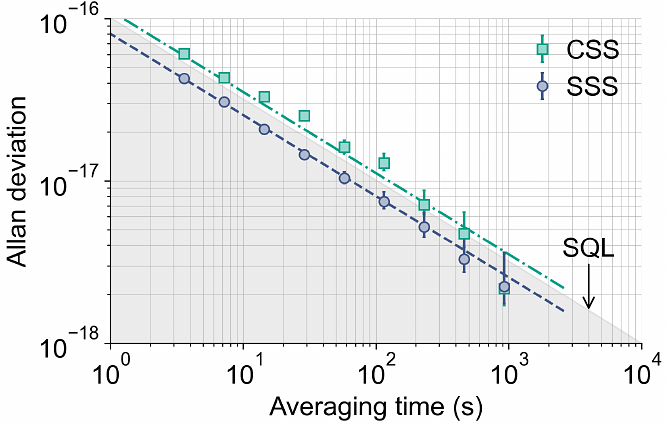Clock precision beyond the Standard Quantum Limit at $10^{-18}$ level

Clock precision beyond the Standard Quantum Limit at $10^{-18}$ level
Y. A. Yang, Maya Miklos, Yee Ming Tso, Stella Kraus, Joonseok Hur, Jun Ye
AbstractOptical atomic clocks with unrivaled precision and accuracy have advanced the frontier of precision measurement science and opened new avenues for exploring fundamental physics. A fundamental limitation on clock precision is the Standard Quantum Limit (SQL), which stems from the uncorrelated projection noise of each atom. State-of-the-art optical lattice clocks interrogate large ensembles to minimize the SQL, but density-dependent frequency shifts pose challenges to scaling the atom number. The SQL can be surpassed, however, by leveraging entanglement, though it remains an open problem to achieve quantum advantage from spin squeezing at state-of-the-art stability levels. Here we demonstrate clock performance beyond the SQL, achieving a fractional frequency precision of 1.1 $\times 10^{-18}$ for a single spin-squeezed clock. With cavity-based quantum nondemolition (QND) measurements, we prepare two spin-squeezed ensembles of $\sim$30,000 strontium atoms confined in a two-dimensional optical lattice. A synchronous clock comparison with an interrogation time of 61 ms achieves a metrological improvement of 2.0(2) dB beyond the SQL, after correcting for state preparation and measurement errors. These results establish the most precise entanglement-enhanced clock to date and offer a powerful platform for exploring the interplay of gravity and quantum entanglement.